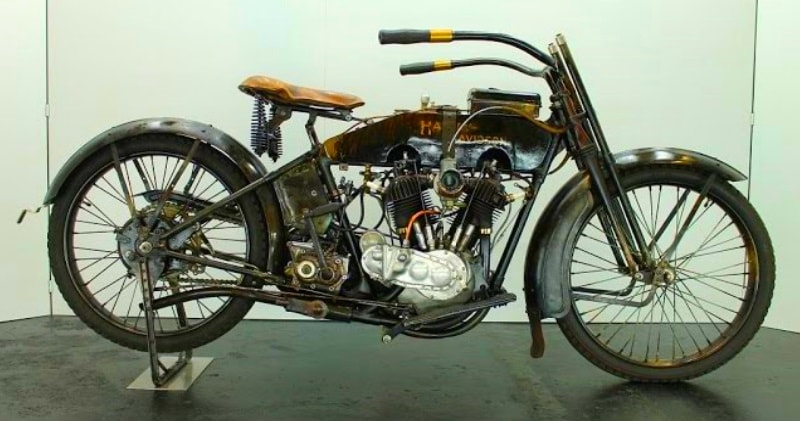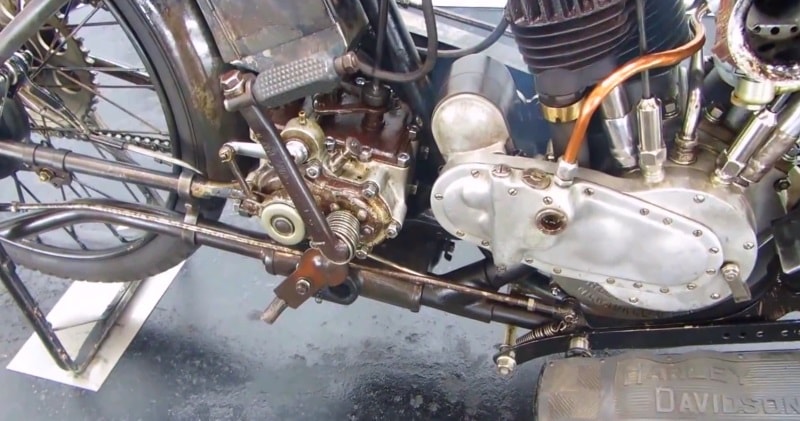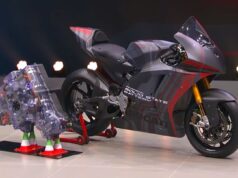The year 1909 marked the appearance of Harley-Davidson’s first v-twin, though it was not until the adoption of mechanically operated inlet valves in 1911 (replacing the ‘atmospheric’ type inherited from the single) that production really took off.
source/image: classic-motorcycle
Known by the sobriquet ‘pocket valve’, this inlet-over-exhaust engine – built in 61 and 74cu in capacities – would remain in production for the next 20 years.
source/image: classic-motorcycle
The need to make better use of the engine’s power characteristics, particularly for sidecar pulling, prompted the introduction of a two-speed rear hub for 1914, by which time chain drive and a proper clutch had been adopted.
Advertisement
Later that same year a conventional, three-speed, sliding-gear transmission with ‘step starter’ was introduced on the top-of-the-range version of the twin which, with full electrical equipment, was listed from now on as the Model J. The Harley-Davidson v-twin offered here is an example of the three-speed, magneto-equipped Model F, which when new was priced at $30 less than the Model J.//classic-motorcycle
This Model F has been completely technically restored in 2008. An Amal carburettor as well as an electronic ignition was fitted on the machine to guarantee a smooth run on the road. The whole motorcycle has a wonderful patina and runs absolutely well.












